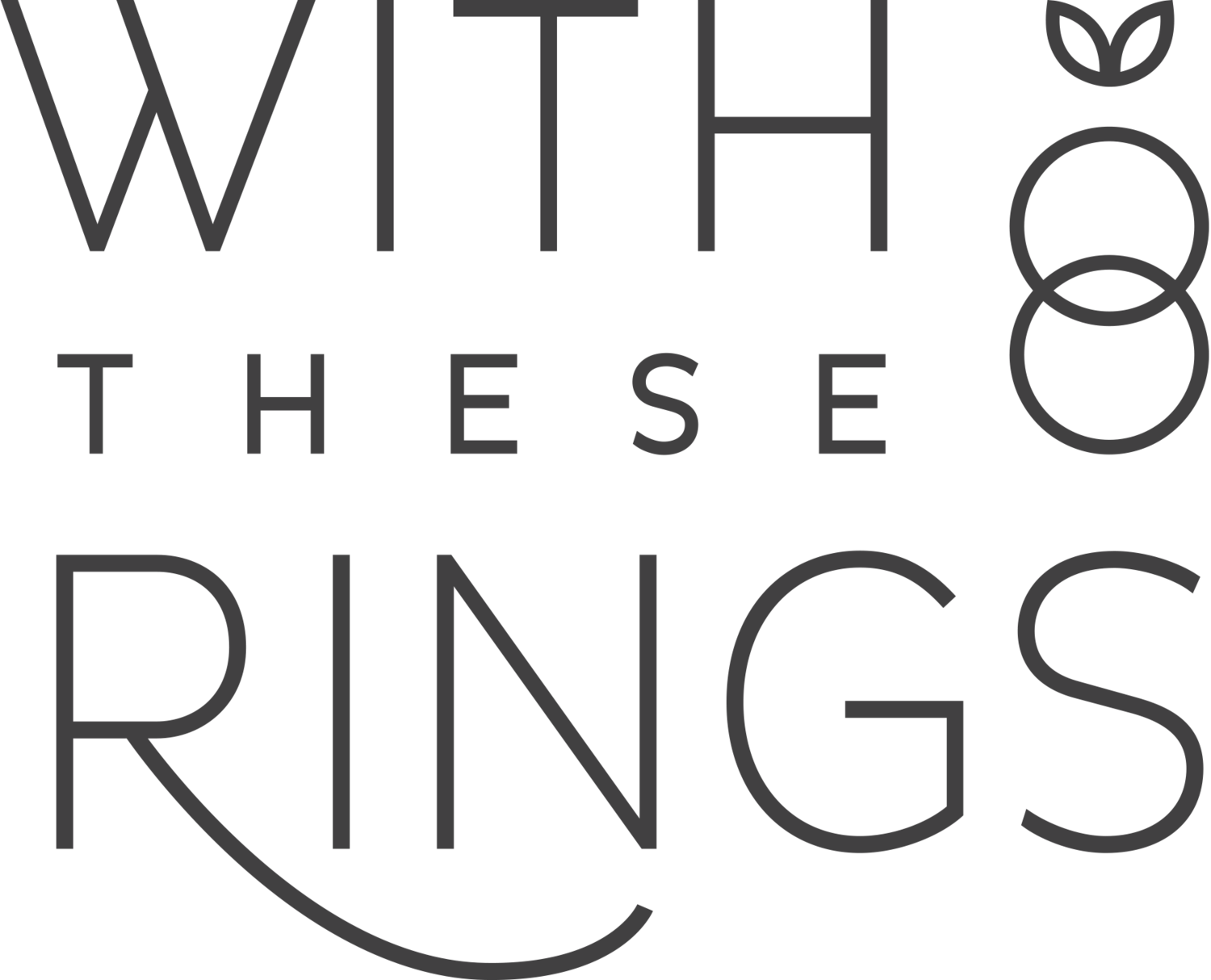Metal Options
YELLOW Gold
Yellow gold has a rich history and would be a classic choice for your wedding bands. Pure gold is naturally yellow in color and very soft. To create more durable options pure gold is alloyed (mixed) with silver and copper, resulting in the different karats of gold. I recommend working with 14kt or 18kt for their strength and quality. It is important to note that all precious metals will show scuff and scratch with daily wear. 14k is the more durable option.
ROSE & Peach
Alloying can also create different colors of gold. Yellow and red alloys are both mixed with silver and copper, but subtle shifts to the amounts used will result in a range of colors. Rose and red golds use higher levels of copper and less silver, but still contain the same amount of pure gold per karat as yellow gold.
Peach is a beautiful alloy color that falls in between rose gold and yellow gold. I have found that it can be a great color match for antique rose gold rings, which are less copper in color than today’s rose gold options. Learn more here.
PALLADIUM WHITE GOLD
This white gold alloy is mixed with palladium. Palladium is a member of the platinum family and shares many of the same characteristics with its cousin platinum, including its “liquid surface” and durability. Palladium white gold is a beautiful metal work with. Standard white gold is alloyed with nickel which makes it brittle and harder to work with. Nickel is also the most common metal allergy and the cause of why many people are allergic to white gold. Palladium white gold is considered a hypoallergenic alloy for people who are allergic to nickel.
A note on color: It is common practice to rhodium plate white gold jewelry giving it a brighter whiter color. At With These Rings we do not plate our metals, this means that if your engagement ring is plated your wedding ring won't be a perfect color match. Standard white gold is slightly more yellow and palladium white gold is a little more grey without the plating. But when they are polished the difference is very subtle and most of the couples I have worked with say that they can't see the difference at all. Over time the plating will wear off exposing the true color of the metal, so jewelers often recommend that you have it "touched up" every so often. Some people choose to have their engagement ring re-plated just before their wedding so that it is bright and shiny. You can have your wedding band plated at the same time, with the same jeweler so that both rings are a perfect match!
Sterling SILVER
Silver is known for its bright white silver color and common use in jewelry. We work with a unique alloy of silver that is a beautiful material to work with. It is a little more durable and tarnish resistant than traditional sterling silver. It is easy to form, texture and polish. Many couples choose to work with silver because its price is substantially lower than other precious metals. It is important to note that while sterling silver can be worn daily, it is a much softer metal and prone to collecting scratches, wearing down, and changing shape over time. Many people, including myself, appreciate the way that silver wears and ages. If durability is a priority for you, I do not recommend silver, not even the harder silver alloy variations. Be sure to read about the pros and cons on silver wedding bands and the special alloy that we use.
Recycled Precious Metals
At With These Rings we always work with 100% recycled precious metals and I recycle all of the metal dust from my studio to keep the cycle going. This means the workbenches, floors, and tools are wiped down in a way that I can send everything in to be refined. Even every piece of sandpaper is filled with metal dust so it is all returned to our trusted refiner.
First they burn out all of the combustible material (i.e. sandpaper) at a low temperature. Then they refine the metal back to its pure elements through a chemical process. Finally new alloys are created as a clean mix. They are known as the world’s greenest refinery. Their process uses 80% less chemicals and creates zero waste water. Scrubber systems remove harmful particulates from all exhaust fumes, so only clean air enters the environment. All cooling water for the smelting furnaces is recycled. They are pretty incredible at what they do.
If you want to learn more just let me know!
Q: Can you recycle my existing jewelry into a new ring?
A: Unfortunately, no. The recycled metals that we use come from a refiner who specializes in recycling precious metals such as silver, gold, palladium, and platinum. By the time we work with the metals they have been through a refining process to "un-alloy" the metal to bring it back to its pure state and then remixed in a new alloy. I currently do not melt down or re-work existing jewelry. If the piece is not sentimental and you would like to use it to trade in for the value of metal I recommend sending it to a trusted refinery. You can then use that money toward your rings, a great way to keep the recycling process going!
“Seriously, book your day right now. Her studio is adorable in a historic building in the center of Port Townsend. Stephanie is delightful, and I thoroughly enjoyed learning about jewelry making from her. She sources the gold from a distributor that specializes in recycled metals. At the end of the day we walked away with the most unique memories and beautiful rings that we will cherish forever.”








